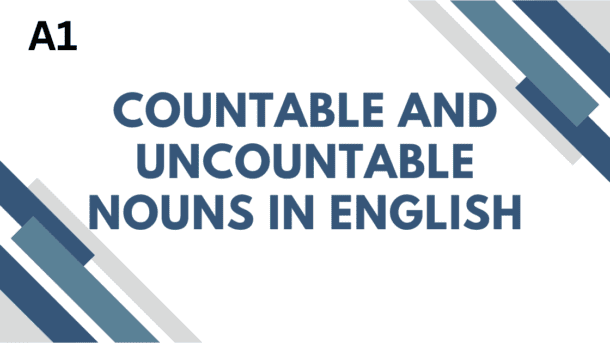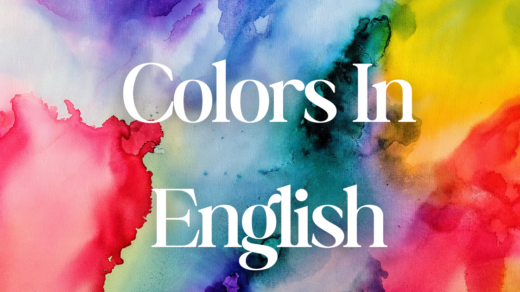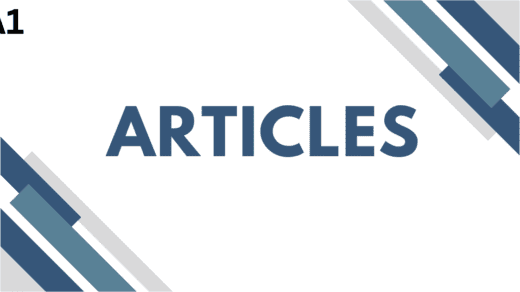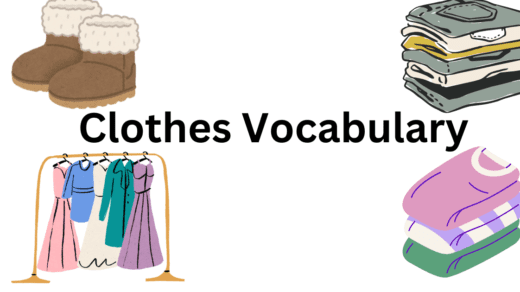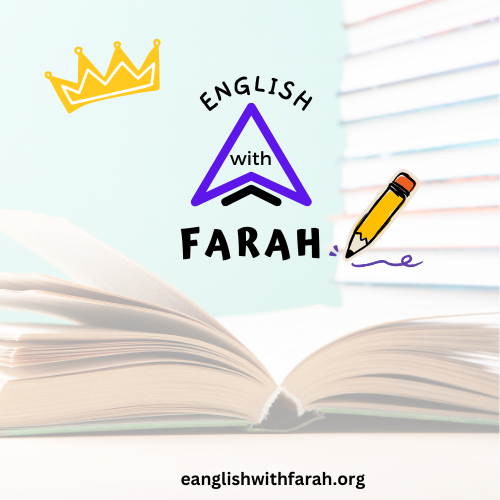Nouns, the building blocks of sentences, name people, places, things, and ideas. In English grammar, nouns are broadly classified into two categories: countable nouns and uncountable nouns (also known as mass nouns). Understanding the difference between countable and uncountable nouns is crucial for accurate and natural English communication, impacting verb agreement, article usage, and overall sentence structure. This guide will delve into the intricacies of countable and uncountable nouns.
What are Nouns?
Before we jump into countable and uncountable nouns, let’s briefly review what nouns are. A noun is a word that names a person, place, thing, or idea.
- Person: teacher, John, doctor, student
- Place: school, London, park, house
- Thing: book, table, car, phone
- Idea: happiness, freedom, love, justice
The Core Difference: Countable vs. Uncountable Nouns
The primary distinction between countable and uncountable nouns lies in whether you can count them individually.
- Countable Nouns: These are nouns that can be counted and have a plural form. You can use a number before them. Think of things you can easily separate and count as individual units.
- Uncountable Nouns: These are nouns that cannot be counted as individual units. They usually refer to substances, concepts, or collections that are seen as a whole. They generally do not have a plural form (though you can sometimes use them in a way that implies individual units – we’ll cover this later).
Defining Countable Nouns:
Countable nouns, as the name suggests, are nouns that can be counted. They refer to things that can be individually distinguished and numbered. They have both singular and plural forms, allowing us to express quantities precisely.
- Singular Form: Refers to one instance of the noun. It’s typically preceded by articles like “a,” “an,” or “the,” or by determiners like “one,” “each,” “every,” or possessive adjectives (my, your, his, her, its, our, their).
- Example: a cat, the book, one apple, my car
- Plural Form: Refers to more than one instance of the noun. It’s usually formed by adding “-s” or “-es” to the singular form, although there are irregular plural forms.
- Example: cats, books, apples, cars
- Irregular Plurals: child (singular) – children (plural)/ man (singular) – men (plural)/ woman (singular) – women (plural)/ foot (singular) – feet (plural)/ tooth (singular) – teeth (plural)/ mouse (singular) – mice (plural)
Key Characteristics of Countable Nouns:
- They can be counted: “One dog, two dogs, three dogs…”
- They have both singular and plural forms: dog/dogs, chair/chairs, idea/ideas
- Singular countable nouns require an article (a, an, the) or a determiner: a student, the teacher, this house
- They can be used with numbers: five cars, ten friends, twenty dollars
- They can be used with quantifiers indicating quantity: few, many, several, a number of
Examples of Countable Nouns:
- Objects: table, chair, computer, phone, pen, book, key, car, house, building
- People: student, teacher, doctor, friend, neighbor, child, parent, worker, customer
- Animals: cat, dog, bird, fish, horse, elephant, lion, tiger, monkey
- Ideas/Concepts: idea, thought, plan, question, problem, solution, reason, example
- Events: meeting, party, concert, game, trip, accident, event, show
Some Examples in Sentences:
- I have a cat.
- There are three chairs in the room.
- She bought many books at the bookstore.
- A student asked a question.
- Several countries are participating in the conference.
Defining Uncountable Nouns:
Uncountable nouns, also known as mass nouns, are nouns that cannot be counted individually. They refer to things that are considered as a whole or a mass, and it’s difficult or impossible to separate them into distinct units. They typically do not have a plural form (though exceptions exist, which will be discussed later).
Key Characteristics of Uncountable Nouns:
- They cannot be counted as individual units: You can’t say “one water,” “two waters.”
- They usually don’t have a plural form: While there are exceptions (which we’ll address), you generally don’t add an “-s” to make them plural. For example, you wouldn’t say “informations” or “advices.”
- They are typically used with singular verbs: Even though they might seem like a collection, they are treated as a single unit. For example: “The information is useful,” not “The information are useful.”
- They cannot be used with the indefinite articles “a” or “an”: You can’t say “a water” or “an air.”
- They can be used with the definite article “the”: “The water in the glass is cold.”
- They are used with quantifiers like “much,” “little,” “a little,” “a great deal of,” “some,” and “any”: much water, a little sugar, a great deal of information, some rice, any advice.
Examples of Uncountable Nouns:
- Liquids: water, milk, juice, coffee, tea, oil, gasoline, wine, beer
- Gases: air, oxygen, nitrogen, smoke, steam, pollution
- Materials: wood, metal, plastic, glass, paper, cotton, wool, leather
- Food (often granular or amorphous): rice, sugar, salt, flour, bread, meat, cheese, fruit (generally), pasta
- Abstract Nouns: information, advice, knowledge, love, happiness, sadness, time, money, education, music
- Activities: work, travel, swimming, dancing, running
- Natural Phenomena: weather, sunshine, rain, snow, fog, darkness
- Languages: English, Spanish, French, Chinese
- Collections/Masses: Examples: furniture, luggage, baggage, equipment, money, clothing, traffic.
Some Examples in Sentences:
- I need to drink some water.
- There is too much sugar in my coffee.
- She gave me some good advice.
- We bought some new furniture for the living room.
- He doesn’t have much money.
- Time is precious.
- Happiness is important.
Quantifying Uncountable Nouns:
Since uncountable nouns cannot be directly counted, we use specific units or containers to quantify them. These units act as countable nouns that allow us to express amounts of the uncountable noun.
- Using Containers: a cup of coffee, a glass of water, a bottle of wine, a bowl of rice, a bag of flour, a carton of milk
- Using Units of Measurement: a kilo of sugar, a gram of salt, a liter of oil, a meter of cloth, an hour of time
- Using “Piece(s) of”: This is commonly used for abstract nouns or items that come in distinct units. a piece of advice, a piece of information, a piece of furniture, a piece of cake
- Using “Amount of/Quantity of”: These are general phrases used for quantifying uncountable nouns. a large amount of money, a small quantity of water
Examples:
- “I need a cup of coffee.” (Here, cup is countable)
- “She bought two kilos of sugar.” (Here, kilos is countable)
- “He gave me a piece of advice.” (Here, piece is countable)
- “There was a lot of rain yesterday.” (Rain is uncountable, quantified by “a lot of”)
Nouns that can be both Countable and Uncountable:
Some nouns can function as both countable and uncountable, depending on their specific meaning in the sentence. The key is to understand the context and what the noun is referring to.
- Hair:
- Uncountable: Refers to hair in general. She has long hair.
- Countable: Refers to individual strands of hair. I found a hair in my soup.
- Time:
- Uncountable: Refers to time in general. We don’t have much time.
- Countable: Refers to specific instances or periods of time. I’ve been to Paris three times.
- Light:
- Uncountable: Refers to light in general. The room was filled with light.
- Countable: Refers to a source of light. The city was lit by street lights.
- Paper:
- Uncountable: Refers to paper as a material. This table is made of paper. (Less common in modern context)
- Countable: Refers to a sheet or document made of paper. I need a piece of paper. I have a paper to write for class.
- Experience:
- Uncountable: Refers to experience as knowledge or skill gained over time. He has a lot of experience in marketing.
- Countable: Refers to a specific event or occurrence. That was an interesting experience.
- Iron:
- Uncountable: Refers to the metal iron. Iron is a strong metal.
- Countable: Refers to an appliance for ironing clothes. I need to buy a new iron. Also, used to refer to a golf club. He uses a seven iron.
- Chocolate:
- Uncountable: Refers to chocolate as a substance. Do you like chocolate?
- Countable: Refers to a piece of chocolate. I ate three chocolates.
Plural Forms of Uncountable Nouns (Exceptions):
While uncommon, some uncountable nouns can take on plural forms, but with a shift in meaning. This usually indicates a specific variety, type, or instance of the noun.
- Waters: Refers to different types of water (mineral water, sea water, etc.) or bodies of water. The waters of the Caribbean are crystal clear.
- Teas: Refers to different types of tea. The store sells a wide variety of teas.
- Sands: Refers to different types of sand or sandy areas. The sands of the Sahara are vast and unforgiving.
- Sugars: Refers to different types of sugar. The recipe calls for different sugars.
- Fruits: While fruit is generally uncountable, fruits can be used to refer to a variety of different types of fruit. The shop sells fresh fruits.
- Papers: Can refer to academic articles or official documents. She published several papers on climate change. He needs to sign the legal papers.
How to Determine if a Noun is Countable or Uncountable (When it Can Be Both):
- Think about the context: Read the sentence carefully and consider the meaning of the noun.
- Can you add an ‘s’ to make it plural? If so, it’s likely countable in that context.
- Is it being used with “a/an”? If so, it’s definitely countable and singular.
- What quantifiers are being used? “Much,” “little,” and “a great deal of” typically indicate an uncountable noun. “Many,” “few,” “several,” and “a number of” indicate a countable noun.
Common Mistakes and How to Avoid Them
- Using “a/an” with uncountable nouns: Incorrect: “a water,” “an advice.” Correct: “some water,” “a piece of advice.”
- Pluralizing uncountable nouns: Incorrect: “informations,” “advices,” “furnitures.” Correct: “information,” “advice,” “furniture.” You can sometimes add ‘s’ if referring to types or brands as mentioned below.
- Using plural verbs with uncountable nouns: Incorrect: “The information are useful.” Correct: “The information is useful.”
- Misusing quantifiers: Incorrect: “many water,” “few sugar.” Correct: “much water,” “little sugar.”
- Forgetting to use units of measure: Incorrect: “I want water.” Correct: “I want a glass of water.”
Special Cases and Exceptions
- Collective Nouns: These nouns refer to a group of individuals but are treated as singular in some contexts and plural in others (this is a separate topic but relates to countability). Examples: family, team, committee, government. “The family is having dinner” (emphasizing the group as a whole). “The family are arguing about what to watch on TV” (emphasizing the individual members).
- Plural Uncountable Nouns (Rare): In specific instances, some traditionally uncountable nouns can take a plural form, often to indicate types or brands of something. “We sell different coffees from around the world” (referring to different types/blends). “The wines of France are famous.”
- Currency: While “money” is uncountable, specific currencies (dollars, euros, pounds) are countable. “I have a lot of money.” “I have five dollars.”
1. Practice Exercises
Let’s put your knowledge to the test!
Exercise1: Identify whether the noun is countable (C) or uncountable (U).
- ____ car
- ____ water
- ____ furniture
- ____ apple
- ____ time
- ____ advice
- ____ student
- ____ sugar
- ____ experience
- ____ information
Exercise2: Fill in the blanks with “a,” “an,” and “some,” or leave blank if it doesn’t need an article.
- I need to buy ______ milk.
- She has ______ interesting idea.
- There are ______ students in the class.
- He gave me ______ good advice.
- I would like ______ cup of coffee, please.
- They bought ______ new furniture for their house.
- ______ time is precious.
- She found ______ hair in her soup.
- I need ______ paper to write on. (Assume you mean a sheet of paper)
- He doesn’t have ______ money.
Exercise3: Correct the sentences below.
- I need an advice.
- There are too much sugars in this cake.
- The informations are very useful.
- She has few money.
- I want a water.
Answers to Exercises:
Exercise1:
- C
- U
- U
- C
- U
- U
- C
- U
- Both (depending on context, treat as U generally unless there is a number indicating a quantity)
- U
Exercise2:
- some
- an
- many
- some
- a
- new
- (blank – no article needed)
- a
- a
- much
Exercise3:
- I need some advice. OR I need a piece of advice.
- There is too much sugar in this cake.
- The information is very useful.
- She has little money.
- I want some water. OR I want a glass of water.
Conclusion
Mastering the distinction between countable and uncountable nouns is essential for producing grammatically correct and natural-sounding English. By understanding the characteristics of each type of countable and uncountable nouns, recognizing nouns that can function in both categories and learning how to quantify uncountable nouns, you will significantly improve your fluency and accuracy in English writing and speaking. Remember to practice regularly.
More grammar lessons:
Object Pronouns (A Comprehensive Guide for English Learners)
Verb To Be Negative Form
Verb To Be (AFFIRMATIVE FORM)
Pronouns ( Comprehensive Guide To Pronouns)
Articles ( A, An, The ) A COMPREHENSIVE GUIDE
English Numbers (1-20)
